
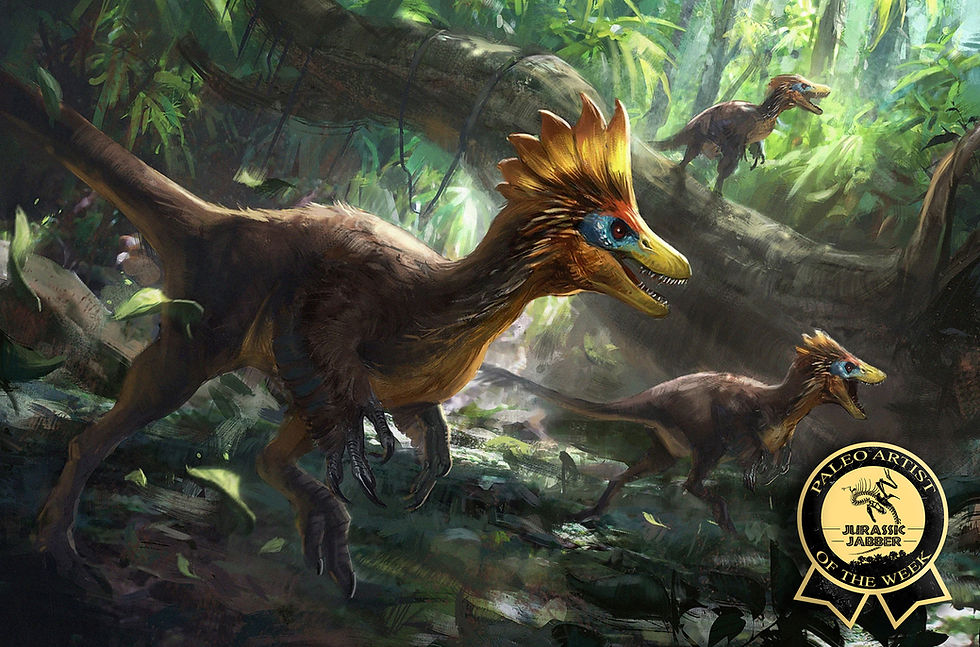
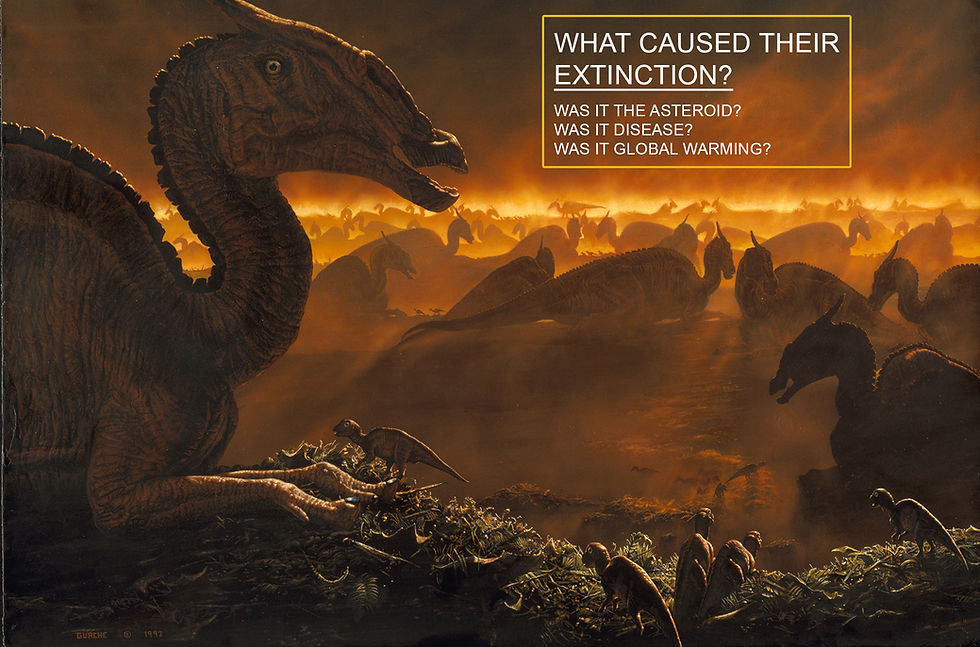

Catch up on the latest news and articles
 |
|---|
 |
 |
 |
 |
 |
 |
 |
 |
 |
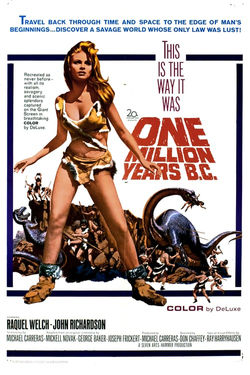 |
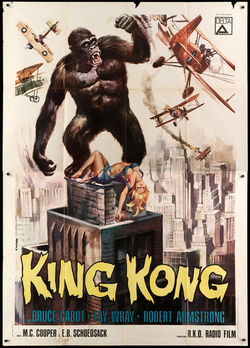 |
 |
 |
 |
 |
Movie Talk
Paleo-Artist of the week
Joshua Ballze
Click here to view his website.
Click the image below for more of his work.
Jurassic Jabber
Video Game!
mobile version not yet available
Video of the week:
Attenborough and the Giant Sea Monster
Narrated by Sir David Attenborough
To see more videos click here.

Attenborough GiantSeaMonster2023
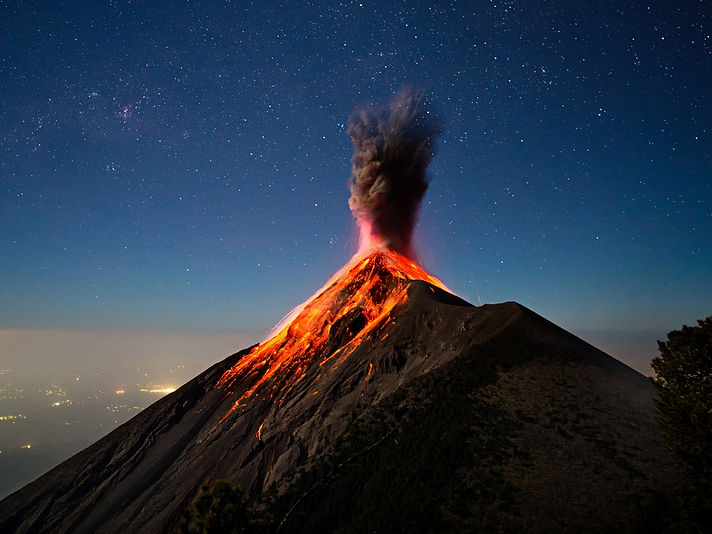
4.5 billions years of global changes
Planet Earth doesn't have a birth certificate to record its formation, which means scientists spent hundreds of years struggling to determine the age of the planet. So, just how old is Earth?
By dating the rocks in Earth's ever-changing crust, as well as the rocks in Earth's neighbors, such as the moon and visiting meteorites, scientists have calculated that Earth is 4.54 billion years old, with an error range of 50 million years.





Take A Trip Through Time

The Cambrian Period marks an important point in the history of life on Earth; it is the time when most of the major groups of animals first appear in the fossil record. This event is sometimes called the "Cambrian Explosion," because of the relatively short time over which this diversity of forms appears. The Cambrian lasted 55.6 million years from 541 million years ago (mya) 485.4 mya. In this time animals like Opabinia, Wiwaxia Anomalocaris and Trilobites filled the oceans.

The second period of the Paleozoic Era. From 485.4 to 443.8 mya. Ordovician rocks have the distinction of occurring at the highest elevation on Earth—the top of Mount Everest. The Ordovician is also known for its intense diversification of marine animal life in what became known as the Ordovician radiation. Large 20 foot shelled squid like Cameroceras and 4 foot sea scorpion Eurypterids ruled the global Panthalassic oceans. It was then followed by the earths 2nd largest mass extinction.

The Devonian period spiked a new wave armored fish called placoderms. The largest of which was Dunkleosteus. 30" long with razor sharp jaws and the second strongest bite force of any aquatic animal in history. The Devonian also gave rise to the first Sharks. By the end of the Devonian, ferns, horsetails and seed plants had also appeared, producing the first trees. Most importantly, it was the time when large air breathing amphibious animals like Tiktaalik took their first steps on land.

Spanning 60 million years from 358.9 to 298.9 Mya. The Carboniferous would have been a nightmare for many humans with phobias today. The oxygen level in the air was much higher than today, so invertebrate insects were able to grow to enormous sizes. Dragon flies like Meganeura grew to have wingspans up to 3 feet. Centipedes like Arthropleura grew 10 feet long. And Megarachne, a spider with a body almost 2 feet long. It was also around this time that reptiles were beginning to grow larger.
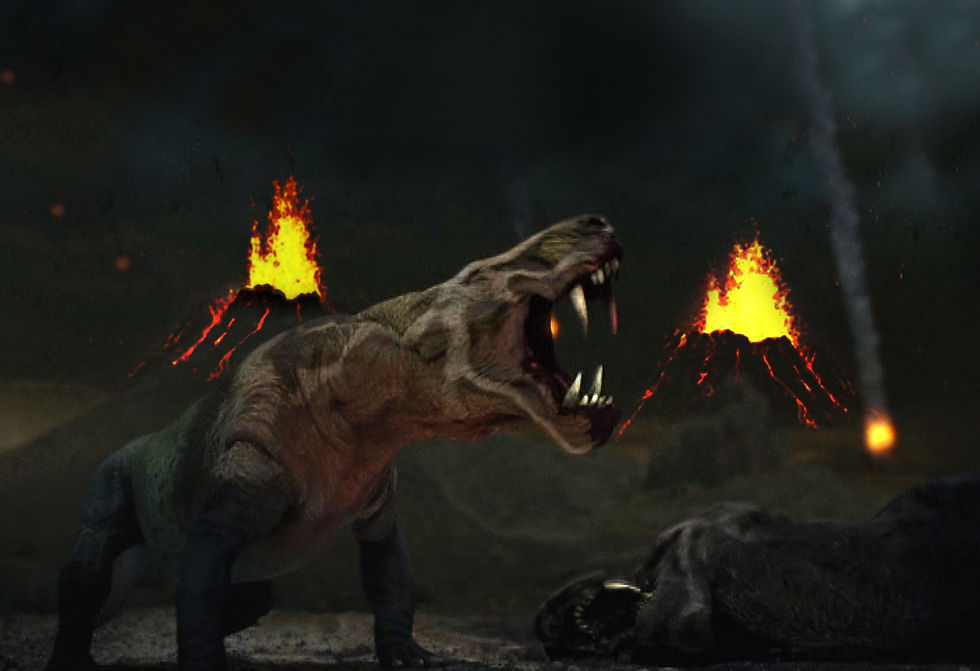
The last period of the Paleozoic era. Giving rise to large mammal like reptiles and Archosaurs. Bear sized predators like Dimetrodon and Gorgonopsid sported the first saber teeth, 5 inches long. But the Permian is mostly known for its end. "The Great Dying", and extinction event that wiped out over 95% of all living things with hellacious volcanic activity. Sulfur filled the air and surrounded the planet. Acid rain clouds killed most plants and trees. Life on earth almost ended.

The first period of the Mesozoic Era between 251 & 200 mya. The global climate during the Triassic was mostly hot and dry. It was at this time that the C-shaped super continent Pangaea was formed. The first true mammals arrived on the scene along with the earliest dinosaurs. But the rulers of the time were the Archosaurs like Postosuchus. A 16 foot crocadilian like terror patrolling the land. But the end Triassic extinction dethroned these animals 76% of life and gave rise to the dinosaurs.

A time of titans teeming with life in the air, on land and in the sea. It looked like one big evolutionary experiment. Never before or after has life on earth been so diverse in the sea or on land. 35 foot Theropods like Allosaurus terrorized the landscape while enormous sauropods like Diplodocus over 100 feet long and pushing 20 tons thundered through the forests. The Jurassic was full of majestic coats but temperatures soared inland resulting in harsh deserts.
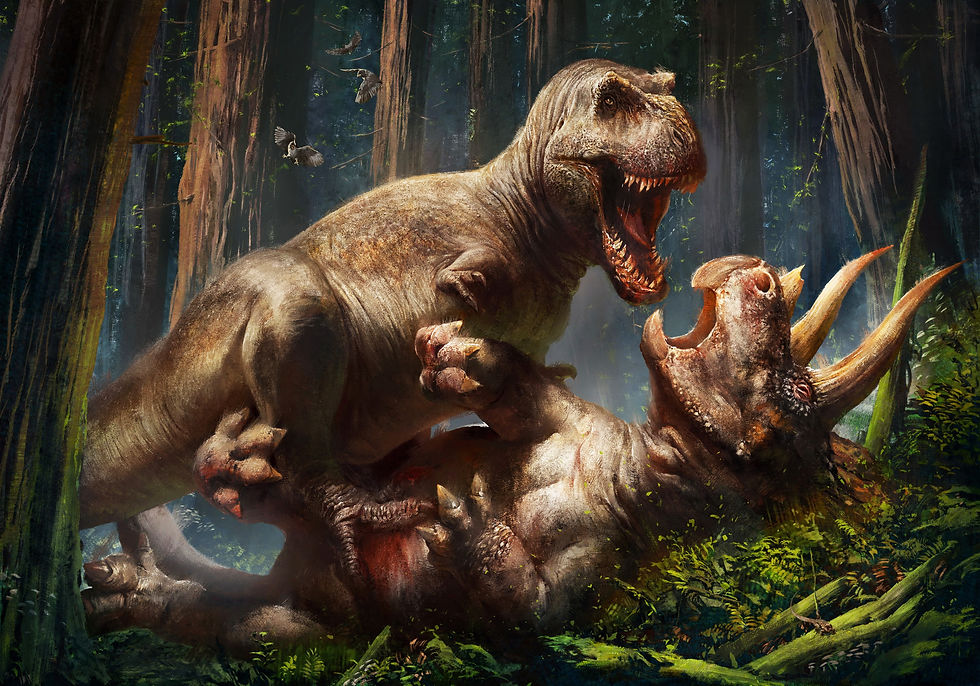
The last and longest segment of the Mesozoic Era & the end of the reign of dinosaurs. The continents & weather at this time were not too different from today. The Cretaceous hosted some of the largest terrestrial animals who ever lived. Gigantic 70 ton Titanosaurs thundered about the land while 45 foot carnivores like Carcharodontosaurus teamed up to bring them down. But sickness, volcanic activity & a 6 mile long meteor eliminated all non-avian dinosaurs 66 million years ago.

Early in the Cenozoic, most of the fauna was relatively small, including small mammals, birds, reptiles, and amphibians. From a geo-perspective, it did not take long for mammals and birds to greatly diversify in the absence of the dinosaurs that had previously dominated. A group of avians known as the "terror birds" grew larger than the average human. Sabertooth Tigers hunted huge Elephants & Horses in vast numbers. Mammals came to occupy almost every available niche. And along came humans.
A Perspective of Time
If you were to break down the history of life on earth into the 12 hours of a clock, human beings would only arrive on the scene 4 seconds before the clock truck 12. The paleozoic and mesozoic eras would not show up until 10 and 11.




Back To The Earth
Like solid rock, magma is a mixture of minerals. It also contains small amounts of dissolved gases such as water vapor, carbon dioxide, and sulfur. The high temperatures and pressure under Earth’s crust keep magma in its fluid state.
There are three basic types of magma: basaltic, andesitic, and rhyolitic, each of which has a different mineral composition. All types of magma have a significant percentage of silicon dioxide. Basaltic magma is high in iron, magnesium, and calcium but low in potassium and sodium. Harsh weather carries the minerals back to rivers and oceans which is then absorbed and transferred back to the mantle.
Tectonic Plate Movement
The movement of the plates creates three types oftectonic boundaries: convergent, where plates move into one another; divergent, where plates move apart; and transform, where plates move sideways in relation to each other. Resulting in Subduction, Lateral Sliding, and Spreading.
READ MORE...
Sediment Layers
Sedimentary rocks are types of rock that are formed by the accumulation or deposition of small particles and subsequent cementation of mineral or organic particles on the floor of oceans or other bodies of water at the Earth's surface.
Sedimentary rocks cover most of the Earth's rocky surface, but the only make up a small percentage of the Earth's crust. Every layer of sediment contains the rocks and minerals of different time periods. The most popular and most recognizable sediment layer is the K-pg boundary line. A black layer marking the end of the dinosaurs containing sulfur, volcanic rock and iridium (meteorite fragments)

Fossilization is extremely rare and only a small fraction of the plants and animals that have lived in the past 600 million years are preserved as fossils. 99% of all animals that have ever lived did't fossilize. This may be surprising, considering the millions of fossils that have been collected over the years, and the many billions still in the rocks. Those plants and animals that do become fossils generally undergo, with some exceptions, several key steps.
First, the soft tissue that exists during life decays leaving behind only the "hard parts" (bone, shell, teeth). Second, hard parts may be transported and broken. This causes the fossilized remains to be incomplete representations of the living animal. It is much more common to find a fragment of shell or bone than it is to find a complete skeleton. Third and most important, hard tissues become buried and altered. In most cases this involves destroying the original material from which the hard parts were made as minerals are slowly dissolved and replaced by new ones. Often times a hard part is dissolved without being replaced by new material, leaving behind only an impression or mold of the original animal. If this mold is filled with sediment that is later cemented into rock it will make a cast of the original animal.
Image by Nathan Hale
Fossilization Process
Understanding Earth's Changes
Over 500 million years of evolution.
Incredible Fossil Discoveries

the first dinosaur taxon outside of Avialae (birds and their immediate relatives) to be found with evidence of feathers. It was covered with a coat of very simple filament-like feathers.
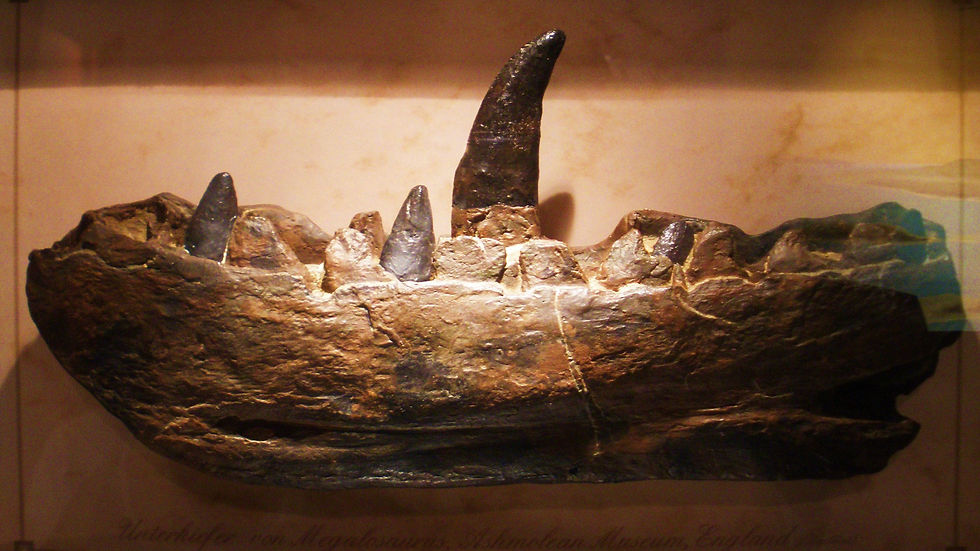
Megalosaurus (meaning "Great Lizard", megas, meaning 'big', 'tall' or 'great' sauros, meaning 'lizard') is an extinct genus of large meat-eating theropod dinosaurs of the Middle Jurassic period (Bathonian stage, 166 million years ago) of Southern England. Although fossils from other areas have been assigned to the genus, the only certain remains of Megalosaurus come from Oxfordshire and date to the late Middle Jurassic.

Although "Leonardo" (as he was dubbed by the excavation team) wasn't the first specimen of Brachylophosaurus ever discovered, he was far and away the most spectacular. This near-complete, mummified, teenaged hadrosaur occasioned a new era of technology in paleontology, as researchers bombarded his fossil with high-powered X-rays and MRI scans in an attempt to piece together his internal anatomy (with mixed results, it has to be said). Many of these same techniques are now being applied to dinosa


is a genus of bird-like dinosaurs that is transitional between non-avian feathered dinosaurs and modern birds. Between the late nineteenth century and the early twenty-first century, Archaeopteryx had been generally accepted by palaeontologists and popular reference books as the oldest known bird. It did not have powered flight. This animal would climb to the top of trees, spread its wings and glide from tree to tree.
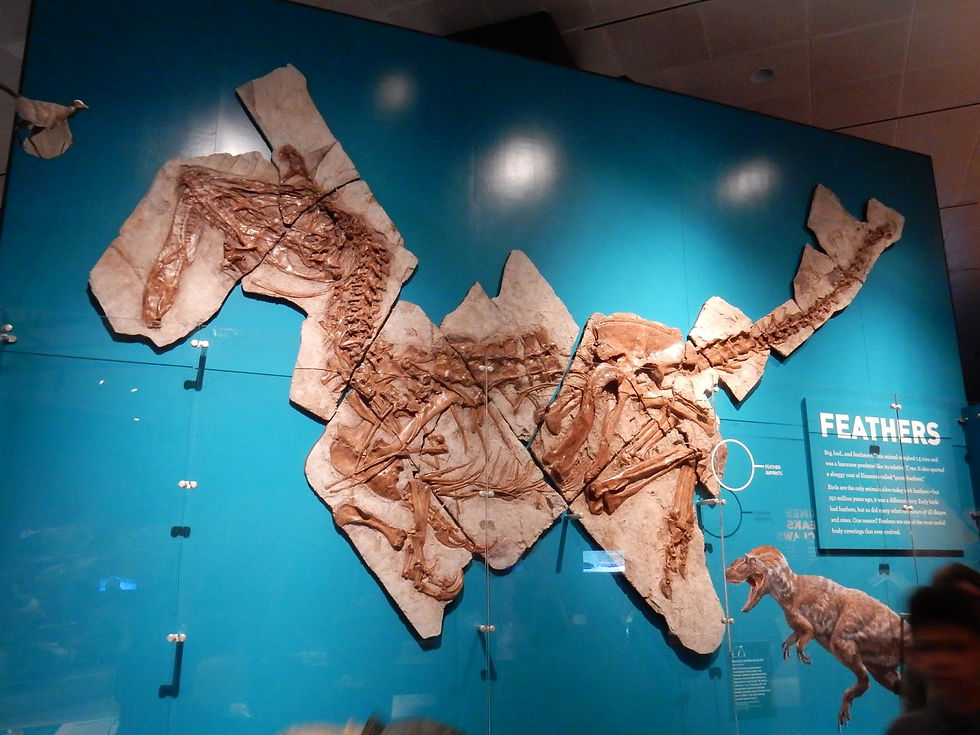
is a genus of tyrannosauroid dinosaurs which contains a single known species, Yutyrannus huali. This species lived during the early Cretaceous period in what is now northeastern China. Three fossils of Yutyrannus huali—all found in the rock beds of Liaoning Province—are currently the largest-known dinosaur specimens that preserve direct evidence of feathers.

is an extinct genus of anomalocaridid, a family of animals thought to be closely related to ancestral arthropods. The first fossils of Anomalocaris were discovered in the Ogygopsis Shale by Joseph Frederick Whiteaves, with more examples found by Charles Doolittle Walcott in the Burgess Shale. Originally several fossilized parts discovered separately (the mouth, feeding appendages and tail) were thought to be three separate creatures

Discovered: Gobi desert, Mongolia, 1971 Age: 74 million years They will remain forever locked in mortal combat. The Velociraptor has sunk its deadly foot claw deep into the neck of the herbivore, a boar-sized creature called Protoceratops. This vicious attack may have hit the carotid artery – a lethal blow. But the Protoceratops fought back. It has thrown the Velociraptor to the ground before it, and its jaws are locked on to the predator’s right arm. When they were suddenly covered preserved.

Dunkleosteus is an extinct genus of arthrodire placoderm fish that existed during the Late Devonian period, about 358–382 million years ago. (19.7 ft) long and 1 t (1.1 short tons) in weight. Few other placoderms rivaled Dunkleosteus in size. Dunkleosteus could quickly open and close its jaw, like modern day suction feeders, and had a bite force of 6,000 N

"lizard of the Meuse River") is a genus of mosasaurs, extinct carnivorous aquatic lizards. It existed during the Maastrichtian age of the late Cretaceous period, between about 70 and 66 million years ago, in western Europe and North America. The name means "Meuse lizard", as the first specimen was found near the Meuse River (Latin Mosa + Greek sauros lizard).

She was sitting on her nest keeping her eggs warm, just like modern birds do, when disaster struck Discovered: Gobi Desert, Mongolia, 1994 Age: 83 to 66 million years Location: Mongolian Dinosaur Museum The first oviraptor was discovered in Mongolia in 1922. It was given its name, which means “egg thief”, because it was found near a nest of what appeared to be Protoceratops eggs. But it turns our there her own eggs that she was protecting.

Inostrancevia is an extinct genus of carnivorous therapsids, containing the largest members of the family Gorgonopsidae, predators characterized by long, saber-tooth-like canines. The various species inhabited northern Russia during the Upper Tatarian, the late permian period. dating from approximately 260 to 254 million years ago. It is known from several skulls and two almost-complete skeletons.
Know Your Paleontologists
This site is for all ages and is dedicated to the love of the prehistoric world. I also travel to schools and museums to educate kids and their families in hopes to broaden their imaginations. The love for dinosaurs help children expand their minds to things beyond the limitations of what you can only see in front of you. expanding your imagination and dreams will help them for the rest of their lives. I would appreciate any contribution you can make to help me keep this site going and continue to educate young minds. Even if it's just a couple dollars.
Thank you
-Ben








